3D Digital Adaptive Thorax Modelling of Peoples with Spinal Disabilities: Applications for Performance Clothing Design
Abstract
Featured Application
Abstract
1. Introduction
2. Methods
2.1. Trunk Analysis
2.1.1. The Thorax
2.1.2. The Shoulder Girdle
2.2. 3D Adaptive Thorax Model
2.2.1. Generic Model–Ribs Model
2.2.2. Generic Model–Sternum Model
2.2.3. Generic Model–Clavicle Model
2.2.4. Generic Model–Scapula Mode
3. Result and Discussions
3.1. 3D Modelling of Thorax without Any Scoliosis-Related Deformity
3.2. Scapula Anti-Penetration Management Model
3.3. 3D Modelling of Thorax with Scoliosis-Related Deformities
4. Conclusions
Author Contributions
Funding
Institutional Review Board Statement
Informed Consent Statement
Data Availability Statement
Acknowledgments
Conflicts of Interest
References
- Yang, K.H.; Presley, B.R. Modeling the Thorax for Impact Scenarios; Elsevier Inc.: Amsterdam, The Netherlands, 2018; ISBN 9780128098325. [Google Scholar]
- Abtew, M.A.; Bruniaux, P.; Boussu, F. Development of adaptive bust for female soft body armour using three dimensional (3D) warp interlock fabrics: Three dimensional (3D) design process. IOP Conf. Ser. Mater. Sci. Eng. 2017, 254, 052001. [Google Scholar] [CrossRef]
- Abtew, M.A.; Bruniaux, P.; Boussu, F.; Loghin, C.; Cristian, I.; Chen, Y.; Wang, L. A systematic pattern generation system for manufacturing customized seamless multi-layer female soft body armour through dome-formation (moulding) techniques using 3D warp interlock fabrics. J. Manuf. Syst. 2018, 49, 61–74. [Google Scholar] [CrossRef]
- Abtew, M.A.; Bruniaux, P.; Boussu, F.; Loghin, C.; Cristian, I.; Chen, Y. Development of comfortable and well-fitted bra pattern for customized female soft body armor through 3D design process of adaptive bust on virtual mannequin. Comput. Ind. 2018, 100, 7–20. [Google Scholar] [CrossRef]
- Abtew, M.A.; Bruniaux, P.; Boussu, F.; Loghin, C.; Cristian, I.; Chen, Y.; Wang, L. Female seamless soft body armor pattern design system with innovative reverse engineering approaches. Int. J. Adv. Manuf. Technol. 2018, 98, 2271–2285. [Google Scholar] [CrossRef]
- Loring, S.H. Structural model of thorax and abdomen for respiratory mechanics. Math. Model. 1986, 7, 1083–1098. [Google Scholar] [CrossRef][Green Version]
- Beyer, B.; Sholukha, V.; Dugailly, P.M.; Rooze, M.; Moiseev, F.; Feipel, V.; Van Sint Jan, S. In vivo thorax 3D modelling from costovertebral joint complex kinematics. Clin. Biomech. 2014, 29, 434–438. [Google Scholar] [CrossRef]
- Fan, W.R.; Wang, H.X. 3D modelling of the human thorax for ventilation distribution measured through electrical impedance tomography. Meas. Sci. Technol. 2010, 21, 115801. [Google Scholar] [CrossRef]
- Perron, R.R.G.; Iskander, M.F. Dynamic 3D model of human thorax for the assessment of changes in lung fluid content and vital signs. In Proceedings of the 2016 IEEE/ACES International Conference on Wireless Information Technology and Systems (ICWITS) and Applied Computational Electromagnetics (ACES), Honolulu, HI, USA, 13–18 March 2016; pp. 16–17. [Google Scholar]
- Zhang, G.; Chen, X.; Ohgi, J.; Miura, T.; Nakamoto, A.; Matsumura, C.; Sugiura, S.; Hisada, T. Biomechanical simulation of thorax deformation using finite element approach. Biomed. Eng. Online 2016, 15, 1–18. [Google Scholar] [CrossRef]
- Saumarez, R.C. An analysis of possible movements of human upper rib cage. J. Appl. Physiol. 1985, 60, 678–689. [Google Scholar] [CrossRef]
- Dong, Z.; Jiang, G.; Wu, Z.; Cong, H. 3D parametric human modeling for warp-knitted seamless garment. Int. J. Cloth. Sci. Technol. 2015, 27, 532–548. [Google Scholar] [CrossRef]
- Chu, C.-H.; Tsai, Y.-T.; Wang, C.C.L.; Kwok, T.-H. Exemplar-based statistical model for semantic parametric design of human body. Comput. Ind. 2010, 61, 541–549. [Google Scholar] [CrossRef]
- Lin, Y.; Wang, M.J. Constructing 3D human model from front and side images. Expert Syst. Appl. 2012, 39, 5012–5018. [Google Scholar] [CrossRef]
- Wang, C.C.L. Parameterization and parametric design of mannequins. Comput. Des. 2005, 37, 83–98. [Google Scholar] [CrossRef]
- Mccartney, J.; Hinds, B.K.; Seow, B.L.; Gong, D. Dedicated 3D CAD for garment modelling. J. Mater. Process. 2000, 107, 31–36. [Google Scholar] [CrossRef]
- Cichocka, A.; Bruniaux, P.; Koncar, V. Modelling of Virtual Garment Design in 3D. Res. J. Text. Appar. 2007, 11, 55–63. [Google Scholar] [CrossRef]
- Cichocka, A.; Bruniaux, P.; Frydrych, I. 3D garment modelling—Conception of its structure in 3D. Fibres Text. East. Eur. 2016, 24, 121–128. [Google Scholar] [CrossRef]
- Antonela, C.; Viorica, C.; Laura, M.; Marian, P. Designing functional clothes for persons with locomotor disabilities. Autex Res. J. 2014, 14, 281–289. [Google Scholar]
- Shahani, M.; Steffek, V. Refashioning adaptive clothing for persons living with hemiparesis. In Proceedings of the 22nd Annual IFFTI Conference, Kent, OH, USA, 24–27 March 2020; pp. 1–11. [Google Scholar]
- Stjepanovič, Z.; Cupar, A.; Jevšnik, S.; Stjepanovič, T.K.; Rudolf, A. Construction of adapted garments for people with scoliosis using virtual prototyping and CASP method. Ind. Text. 2016, 67, 141–148. [Google Scholar]
- Seoud, L.; Adankon, M.M.; Labelle, H.; Dansereau, J.; Cheriet, F. Prediction of scoliosis curve type based on the analysis of trunk surface topography. In Proceedings of the 2010 IEEE International Symposium on Biomedical Imaging: From Nano to Macro, Rotterdam, The Netherlands, 14–17 April 2010; pp. 408–411. [Google Scholar]
- Bachmann, K.R.; Yaszay, B.; Bartley, C.E.; Bastrom, T.P.; Reighard, F.G.; Upasani, V.V.; Newton, P.O. A three-dimensional analysis of scoliosis progression in non-idiopathic scoliosis: Is it similar to adolescent idiopathic scoliosis? Child’s Nerv. Syst. 2019, 35, 1585–1590. [Google Scholar] [CrossRef]
- De Smet, A.; Tarlton, M.; Cook, L.; Berridge, A.; Asher, M. The top view for analysis of scoliosis progression. Radiology 1983, 147, 369–372. [Google Scholar] [CrossRef]
- Hong, Y.; Zeng, X.; Bruniaux, P.; Liu, K. Interactive virtual try-on based three-dimensional garment block design for disabled people of scoliosis type. Text. Res. J. 2016, 87, 1261–1274. [Google Scholar] [CrossRef]
- Hong, Y.; Bruniaux, P.; Zeng, X.; Liu, K.; Curteza, A.; Chen, Y.; Cedex, R. Visual-simulation-based personalized garment block design method for physically disabled people with scoliosis (PDPS). Autex Res. J. 2018, 18, 35–45. [Google Scholar] [CrossRef]
- Hong, Y.; Zeng, X.; Bruniaux, P.; Liu, K.; Chen, Y.; Zhang, X. Collaborative 3D-To-2D Tight-Fitting Garment Pattern Design Process for Scoliotic People. Fibres Text. East. Eur. 2017, 5, 113–117. [Google Scholar] [CrossRef]
- Mosleh, S.; Abtew, M.A.; Bruniaux, P.; Tartare, G.; Chen, Y. Developing an Adaptive 3D Vertebrae Model of Scoliosis Patients for applied sciences Developing an Adaptive 3D Vertebrae Model of Scoliosis Patients for Customize Garment Design. Appl. Sci. 2021, 11, 3171. [Google Scholar] [CrossRef]
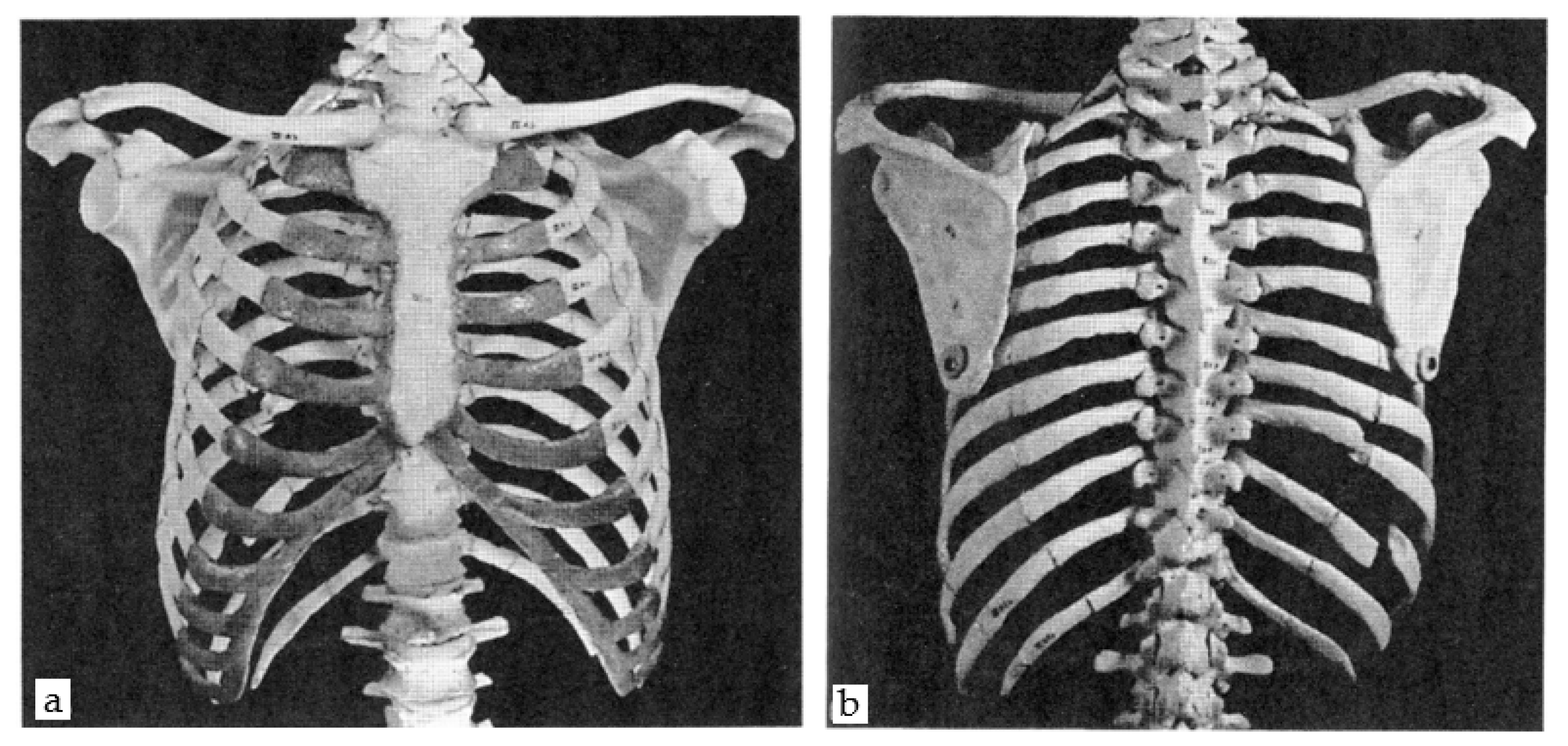


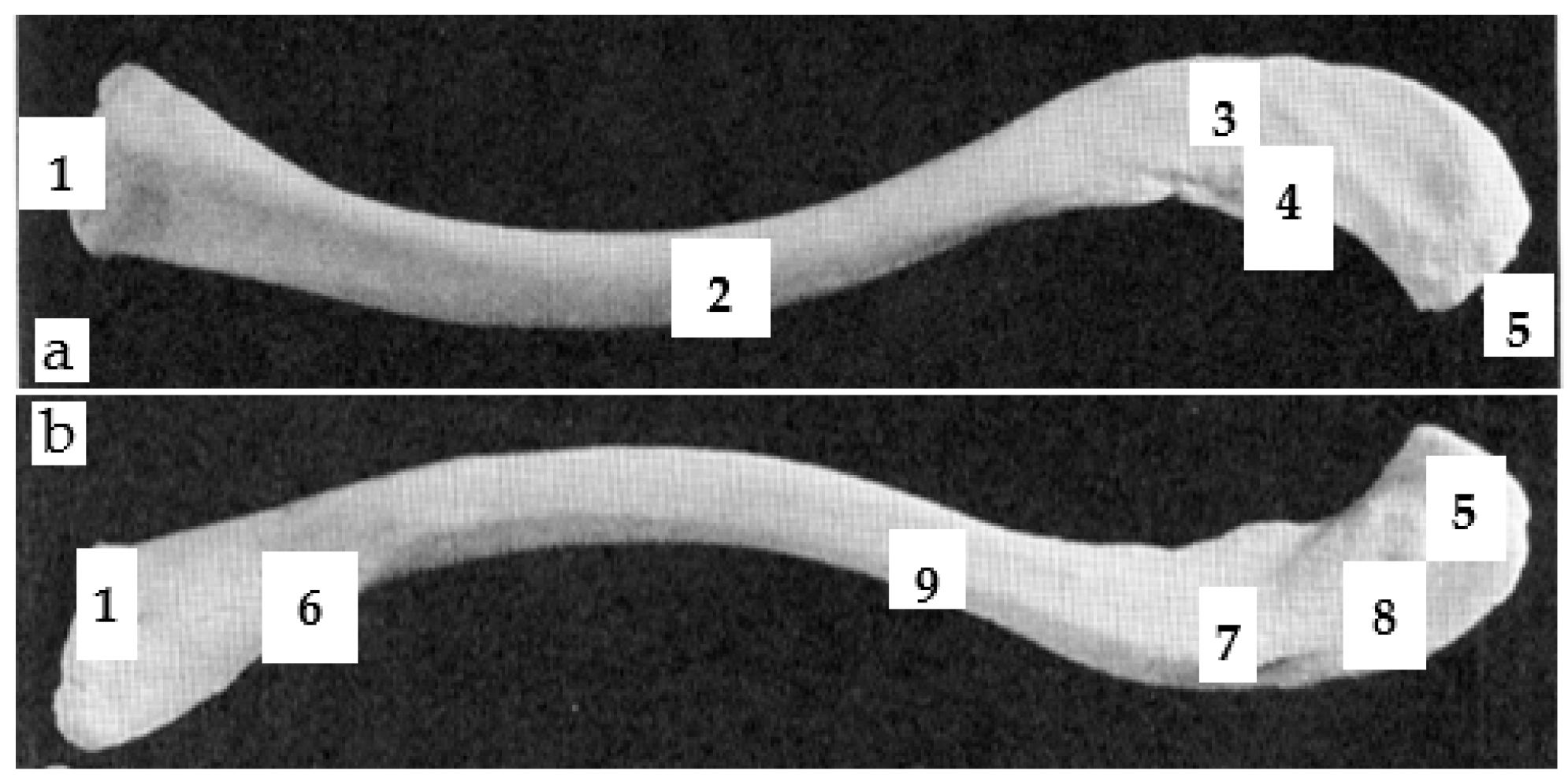
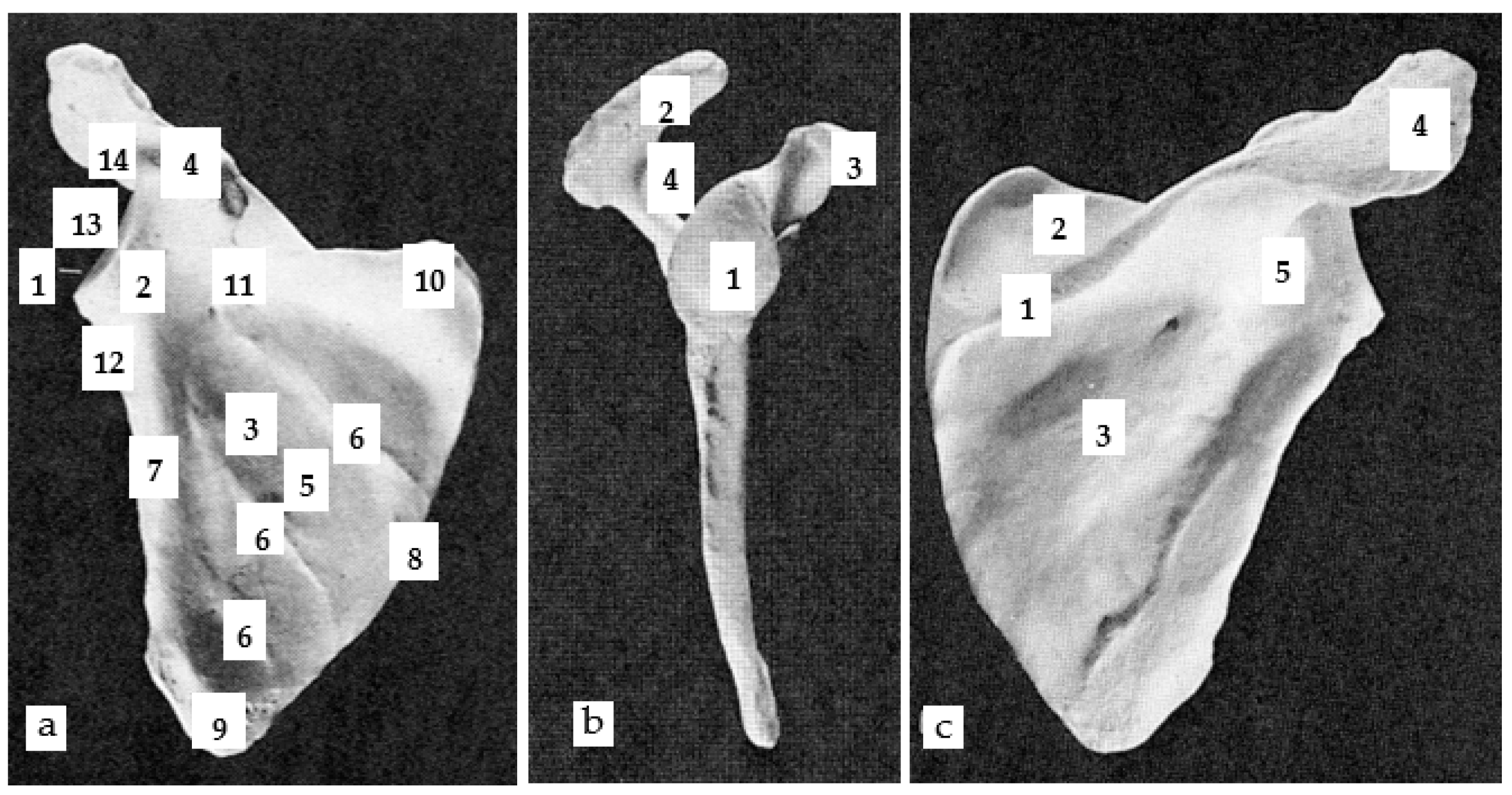
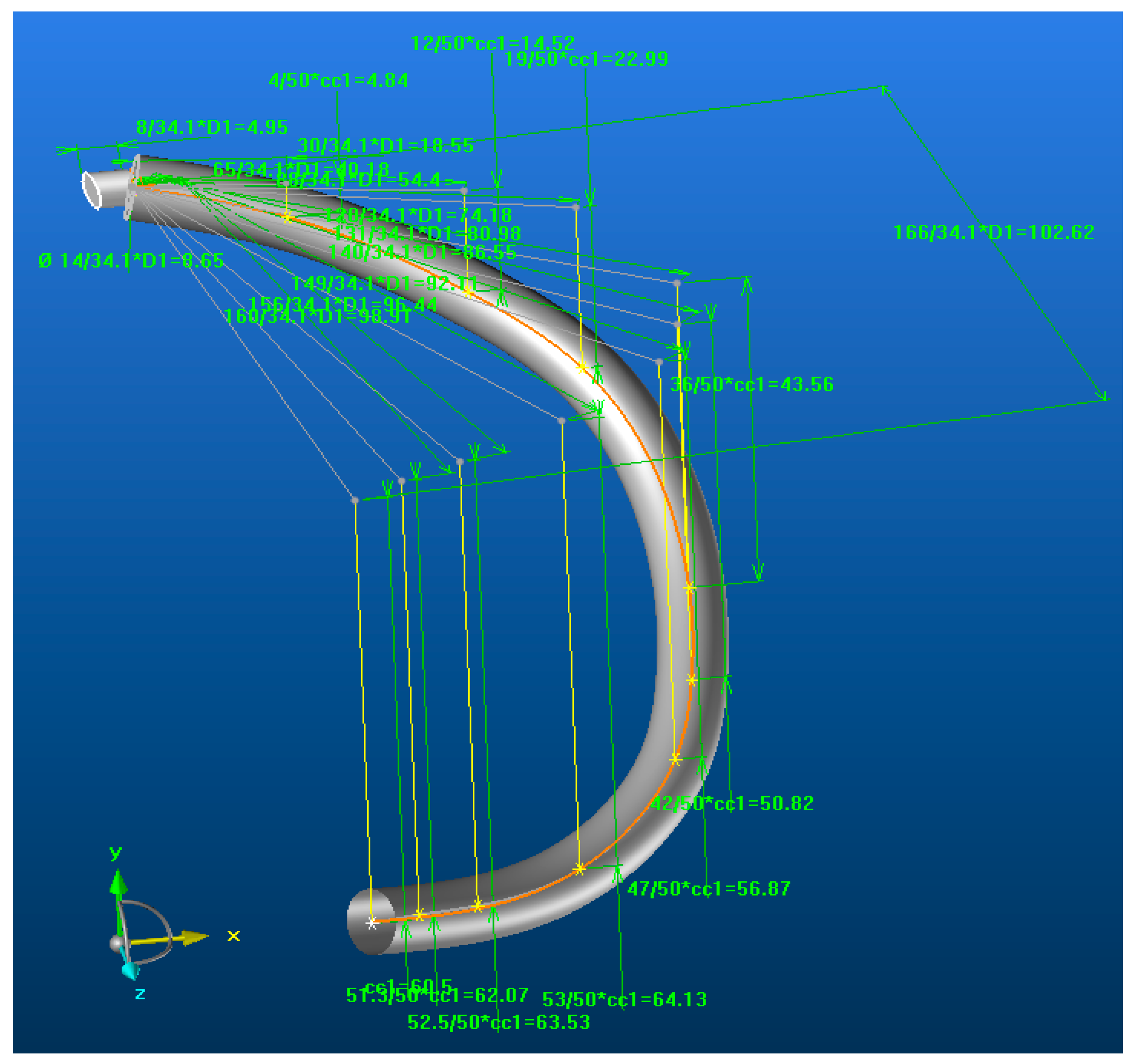

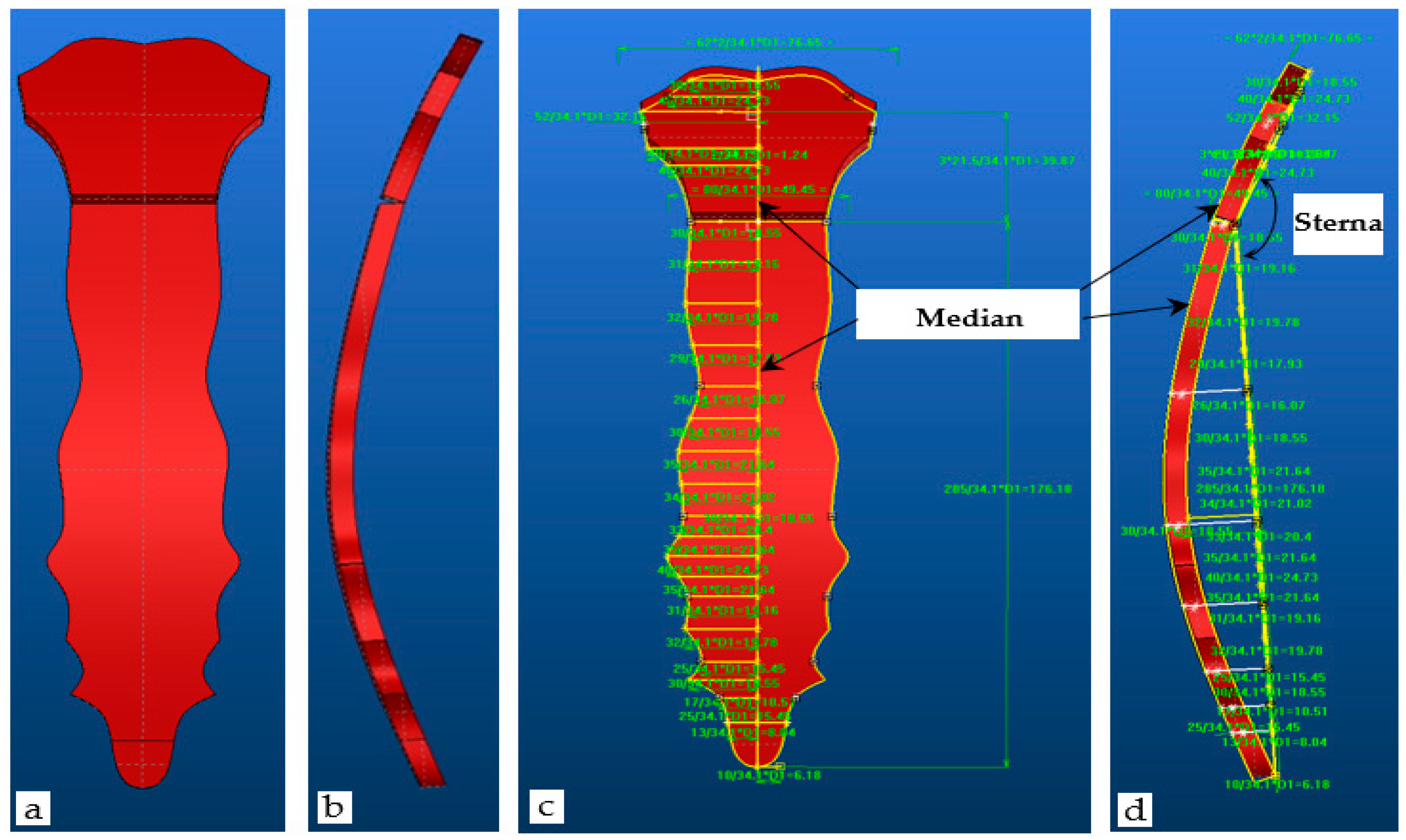
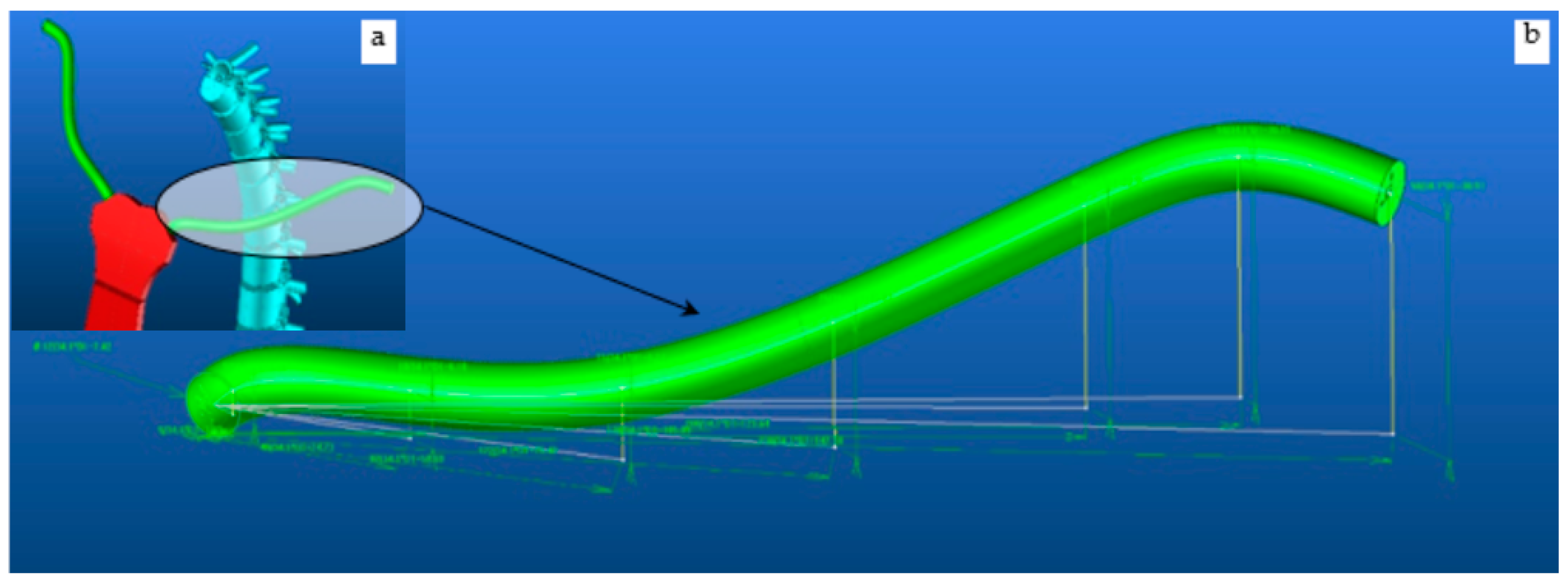
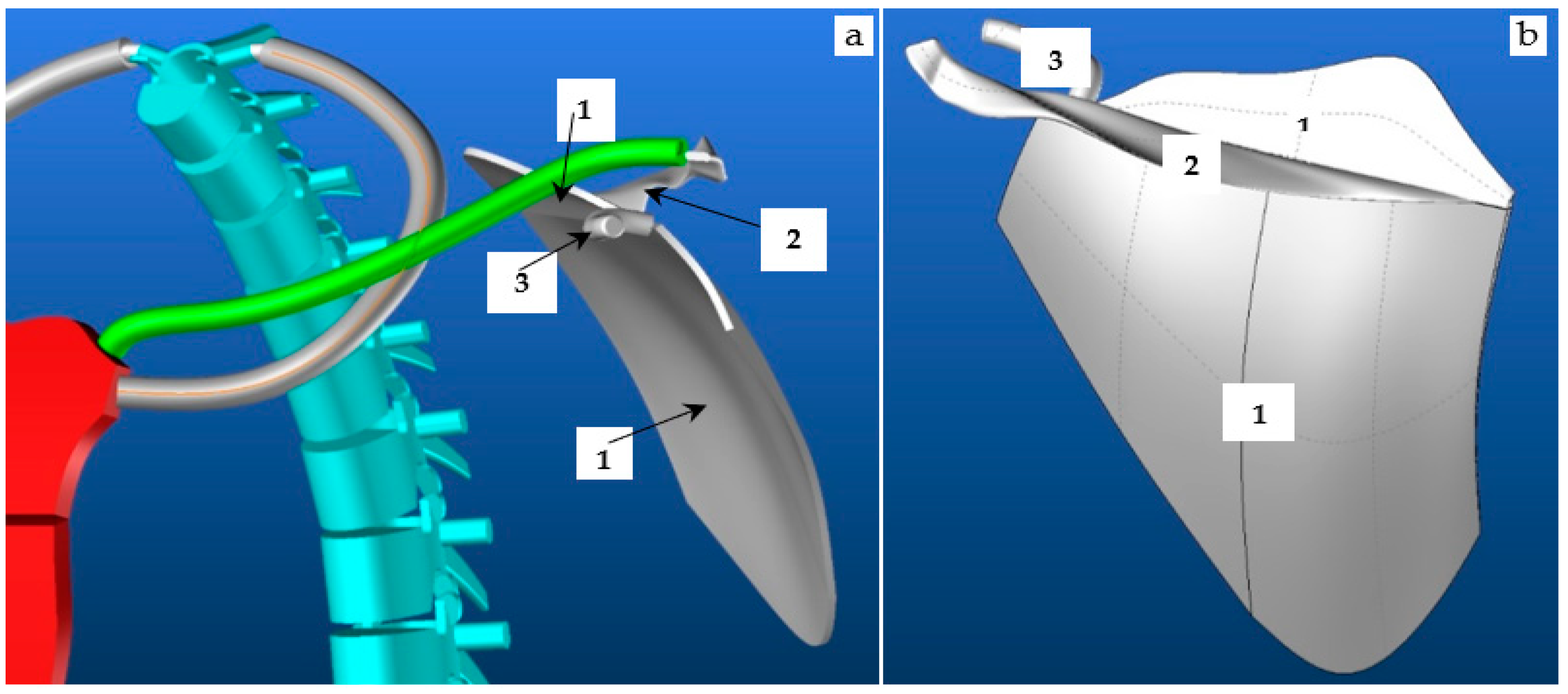
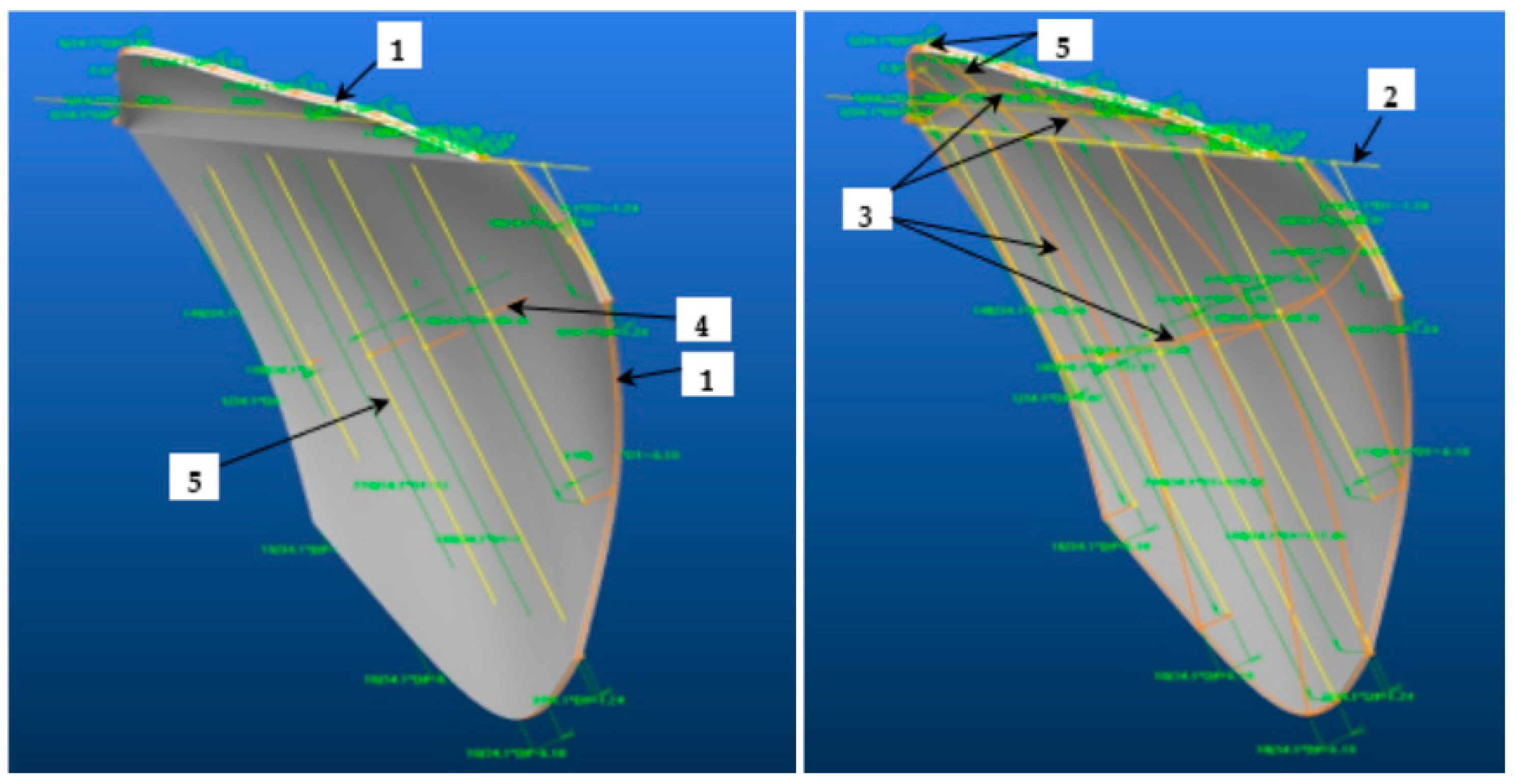
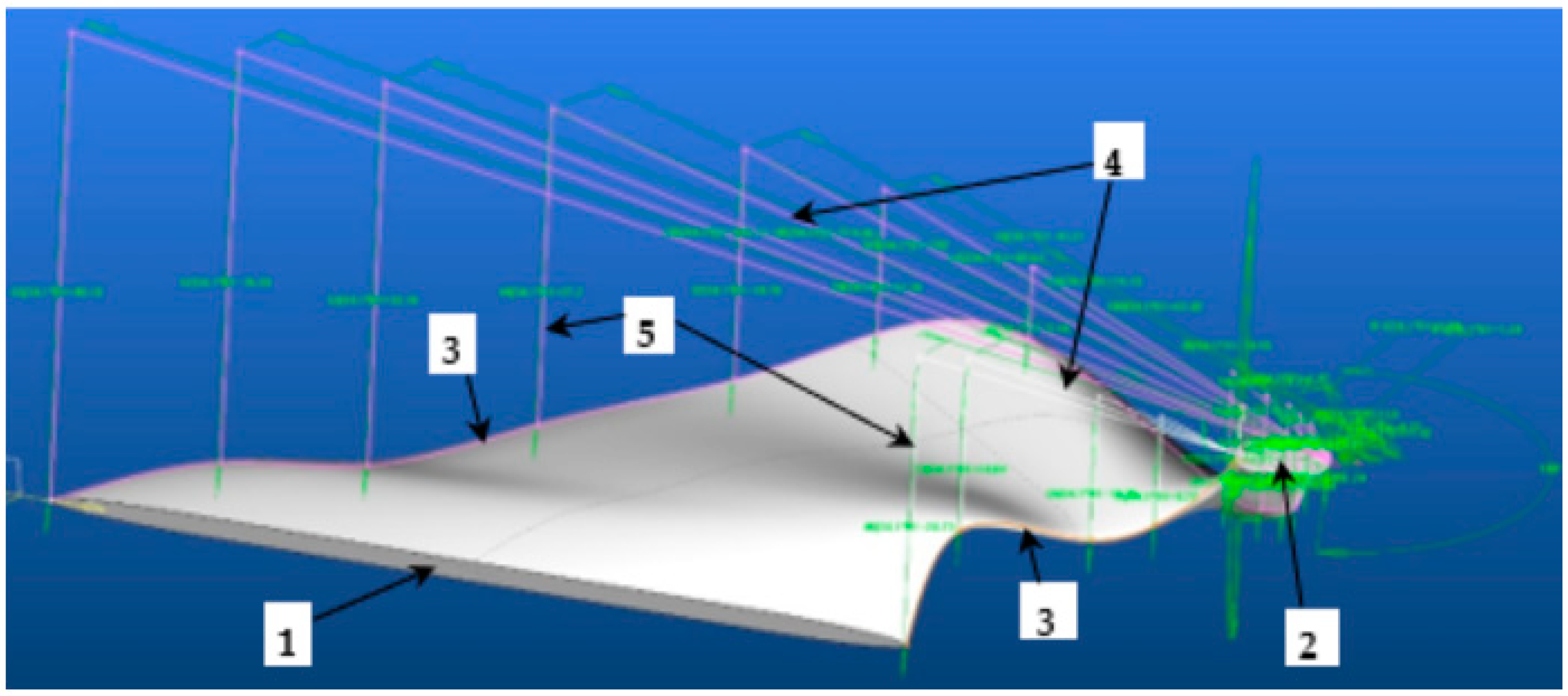
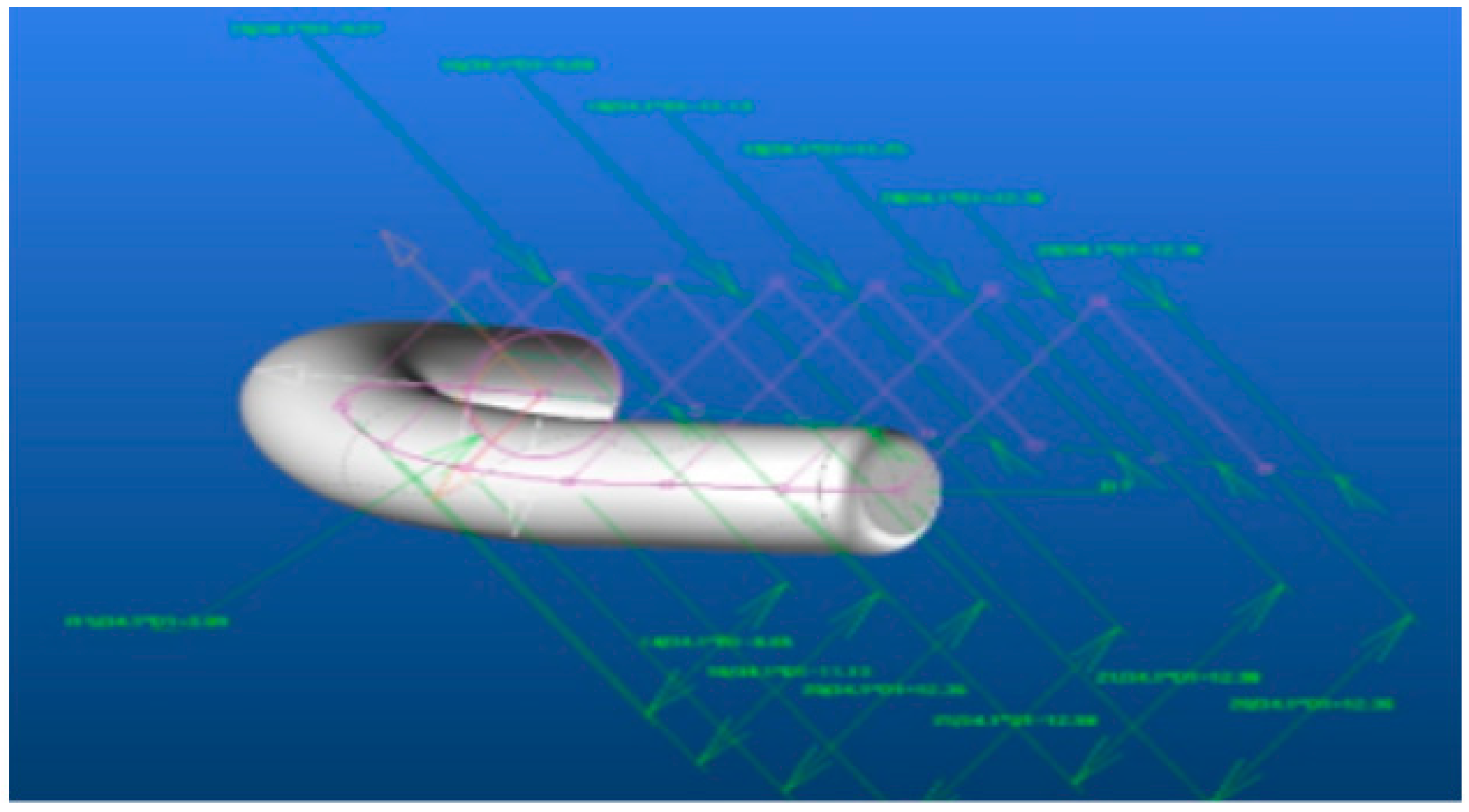
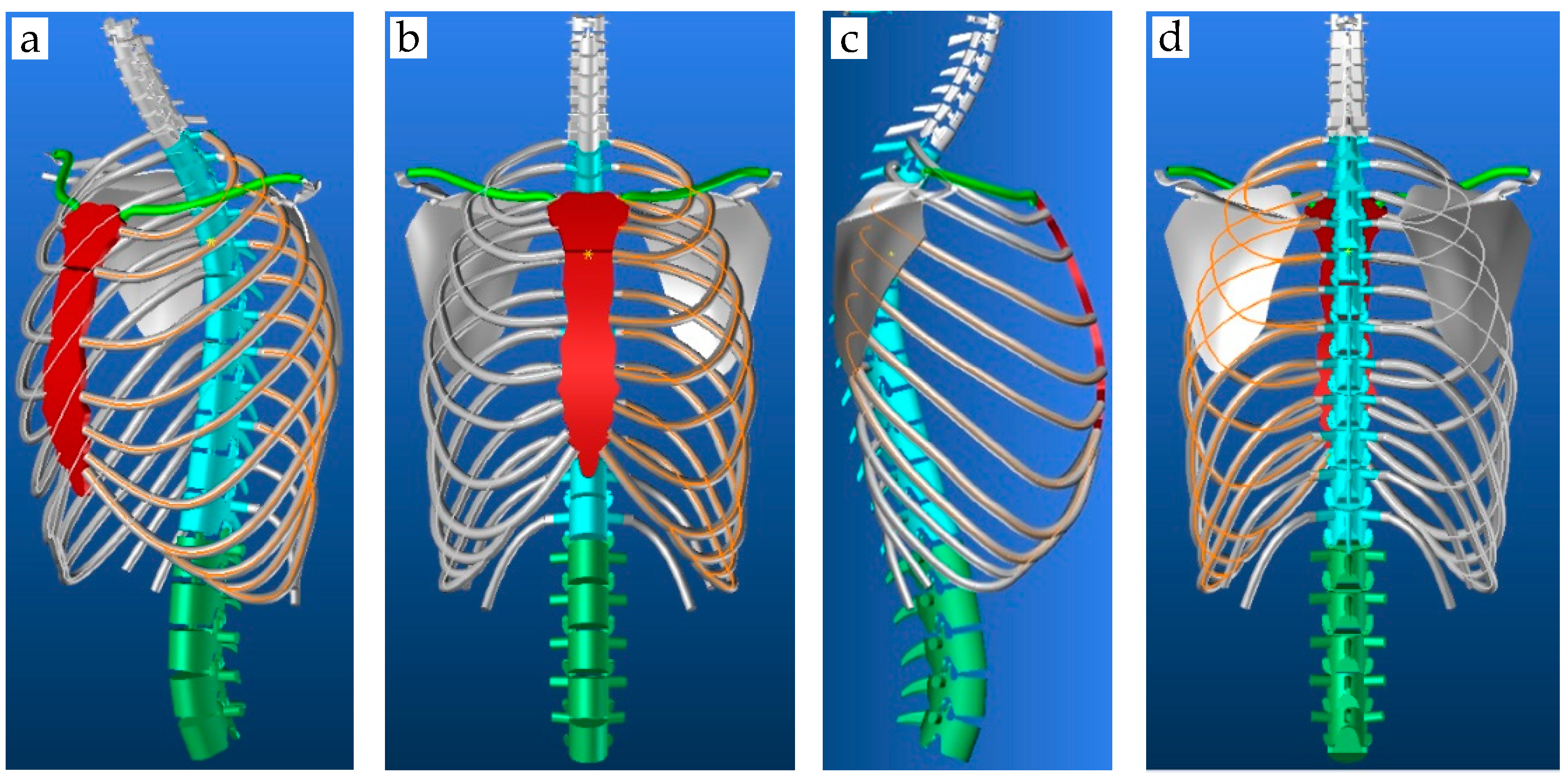
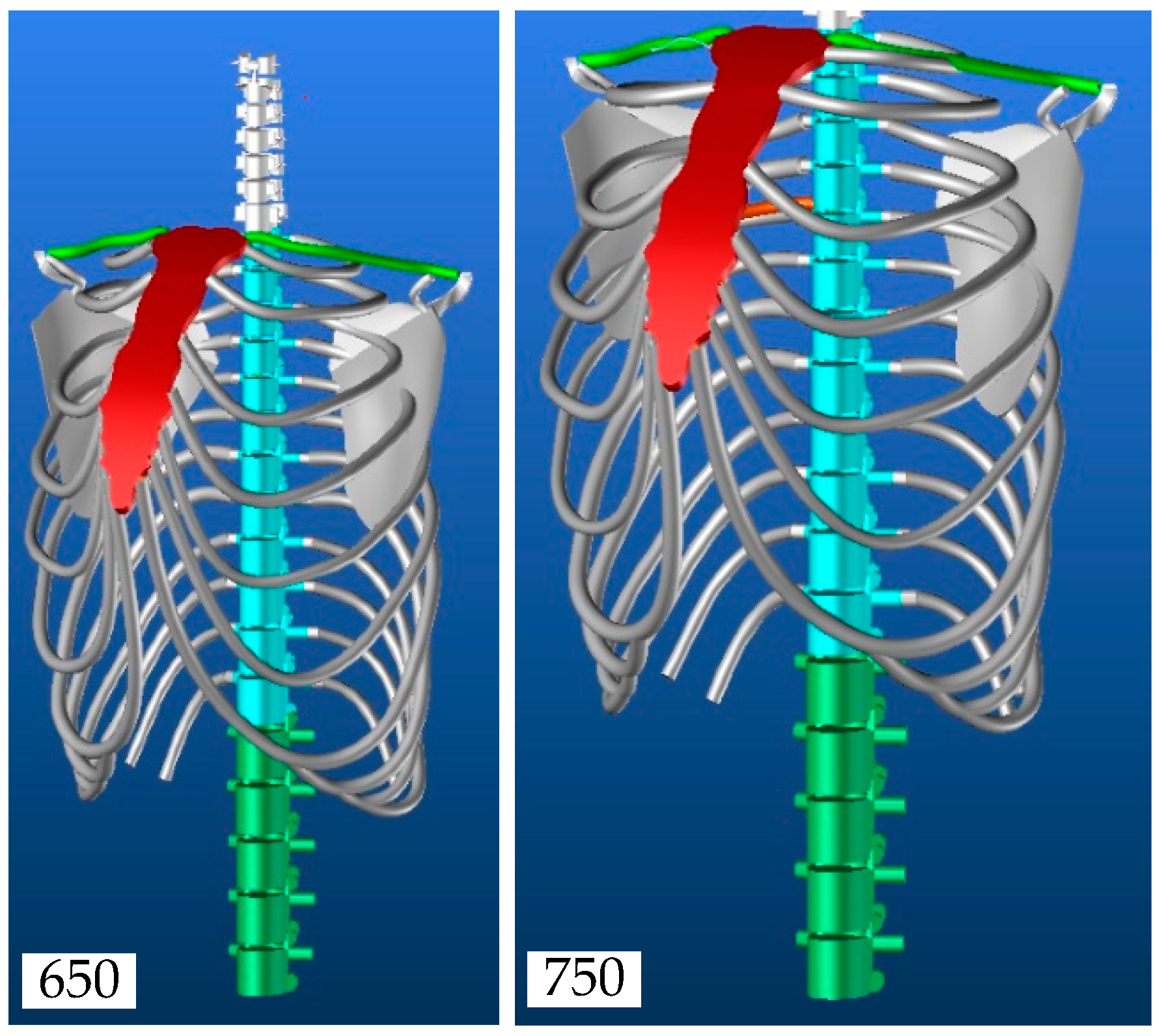

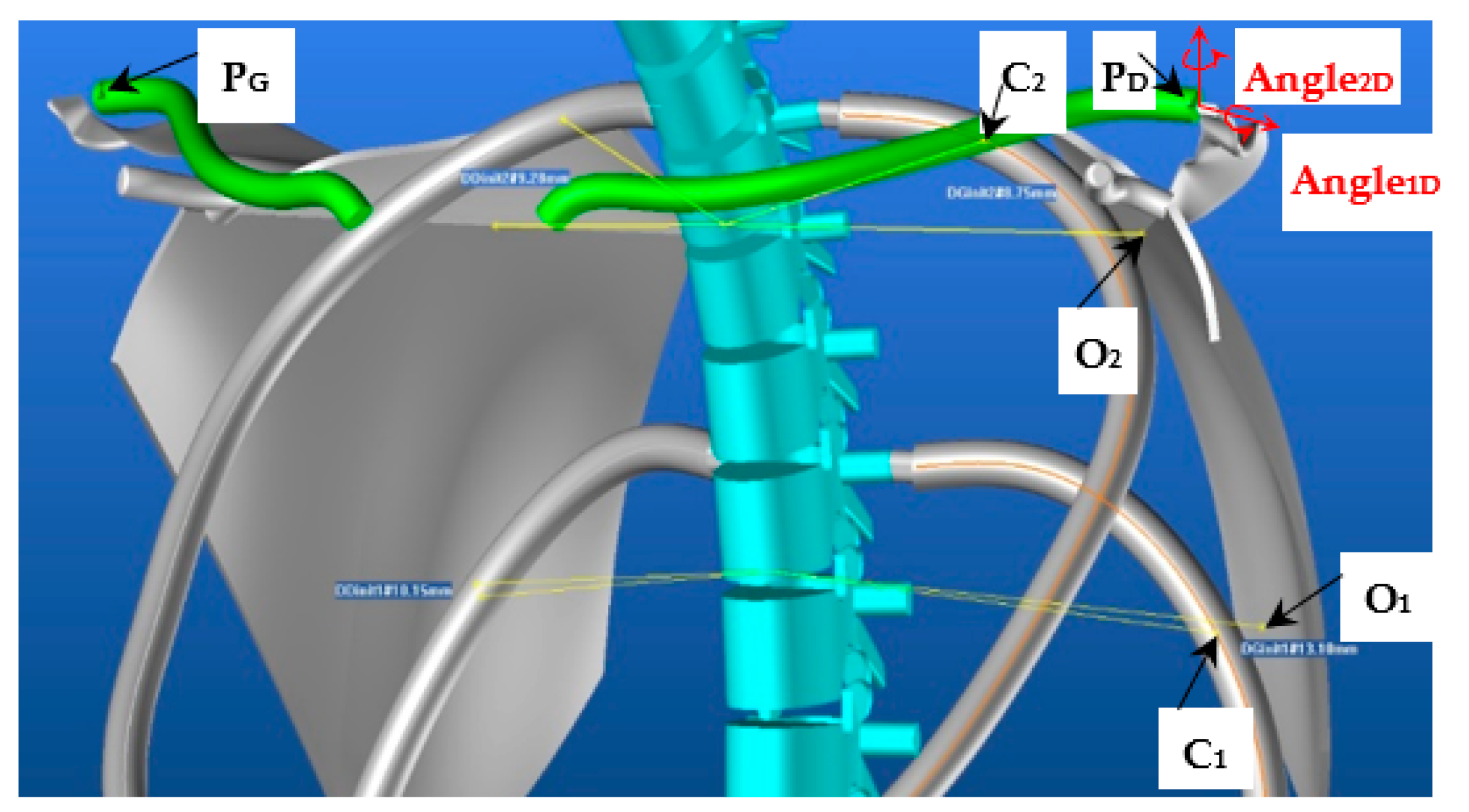
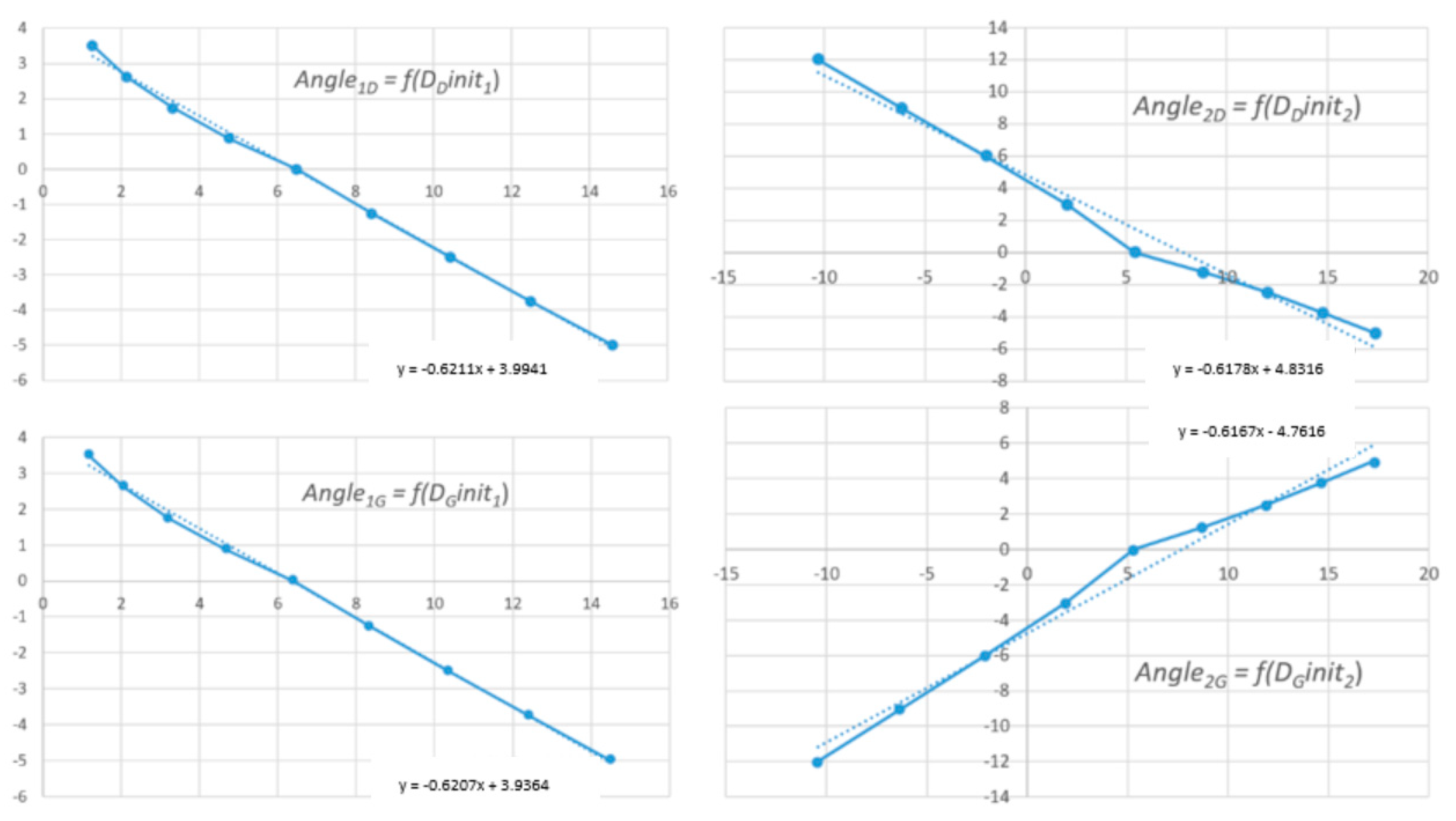
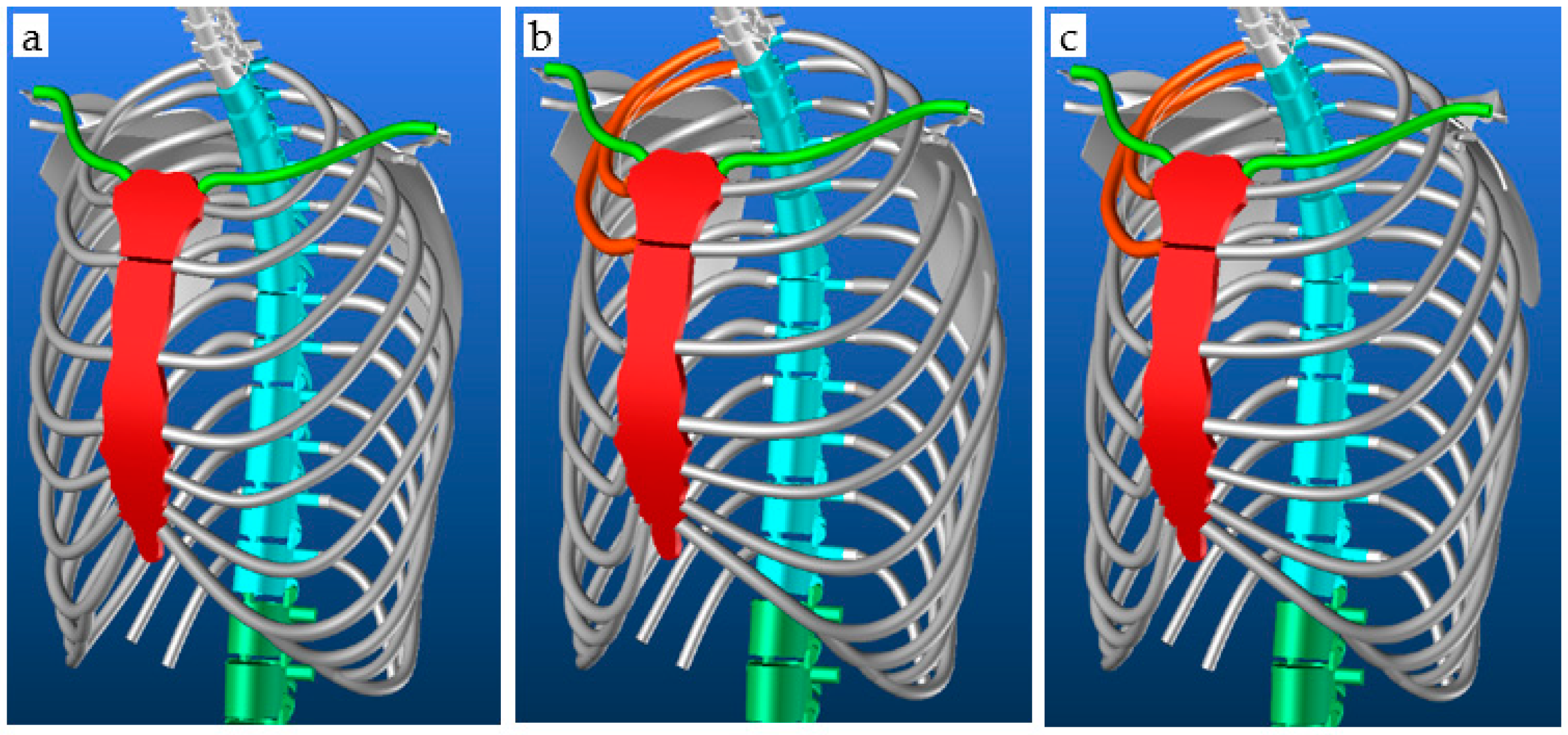
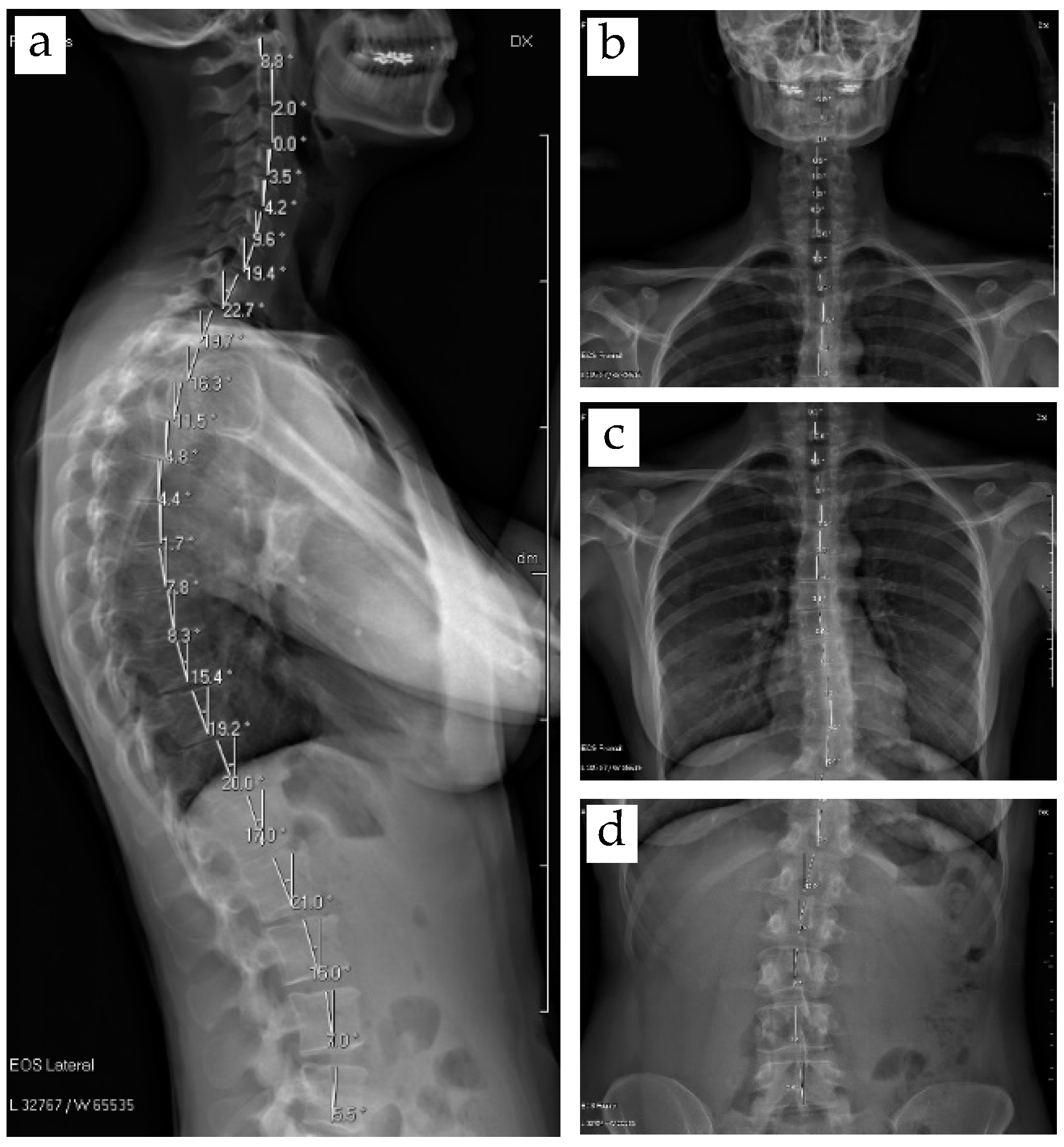
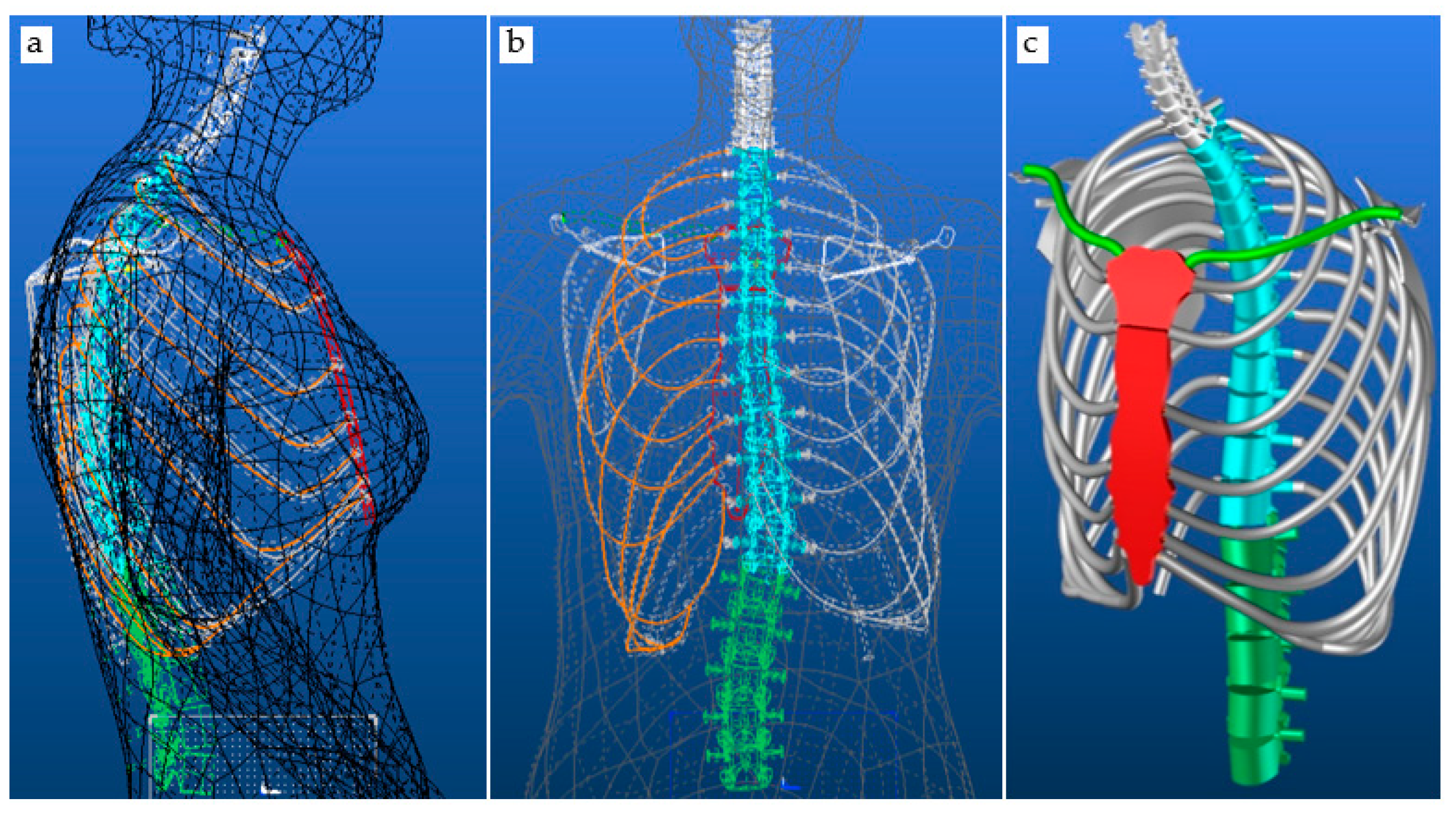
| Segment | H750 | H650 | Sagittal | H650 | Coronal | H650 | Transverse | H650 |
|---|---|---|---|---|---|---|---|---|
| lC1 | 18 | 15.6 | αC1 | 10 | βC1 | −26 | γC1 | 15 |
| lC2 | 18.75 | 16.25 | αC2 | 15 | βC2 | −23 | γC2 | 12 |
| lC3 | 19.5 | 16.9 | αC3 | 20 | βC3 | −20 | γC3 | 9 |
| lC4 | 20.25 | 17.55 | αC4 | 25 | βC4 | −17 | γC4 | 6 |
| lC5 | 20.25 | 17.55 | αC5 | 28 | βC5 | −14 | γC5 | 3 |
| lC6 | 19.5 | 16.9 | αC6 | 30 | βC6 | −11 | γC6 | 0 |
| lC7 | 23.25 | 20.15 | αC7 | 36 | βC7 | −8 | γC7 | −3 |
| lD1 | 25.5 | 22.1 | αD1 | 33 | βD1 | −6 | γD1 | −6 |
| lD2 | 27.75 | 24.05 | αD2 | 27 | βD2 | −3 | γD2 | −9 |
| lD3 | 27.75 | 24.05 | αD3 | 17 | βD3 | 0 | γD3 | −12 |
| lD4 | 29.25 | 25.35 | αD4 | 14 | βD4 | 3 | γD4 | −15 |
| lD5 | 29.25 | 25.35 | αD5 | 8 | βD5 | 6 | γD5 | −18 |
| lD6 | 31.5 | 27.3 | αD6 | 1 | βD6 | 9 | γD6 | −21 |
| lD7 | 32.25 | 27.95 | αD7 | −10 | βD7 | 12 | γD7 | −24 |
| lD8 | 33.75 | 29.25 | αD8 | −13 | βD8 | 15 | γD8 | −27 |
| lD9 | 34.5 | 29.9 | αD9 | −14 | βD9 | 18 | γD9 | −24 |
| lD10 | 36 | 31.2 | αD10 | −15 | βD10 | 21 | γD10 | −21 |
| lD11 | 38.25 | 33.15 | αD11 | −16 | βD11 | 18 | γD11 | −18 |
| lD12 | 40.5 | 35.1 | αD12 | −18 | βD12 | 15 | γD12 | −15 |
| lL1 | 42.75 | 37.05 | αL1 | −15 | βL1 | 12 | γL1 | −12 |
| lL2 | 43.5 | 37.7 | αL2 | −11 | βL2 | 9 | γL2 | −9 |
| lL3 | 42.75 | 37.05 | αL3 | −8 | βL3 | 6 | γL3 | −6 |
| lL4 | 42.75 | 37.05 | αL4 | 4 | βL4 | 3 | γL4 | −3 |
| lL5 | 41.25 | 35.75 | αL5 | 20 | βL5 | 0 | γL5 | 0 |
Publisher’s Note: MDPI stays neutral with regard to jurisdictional claims in published maps and institutional affiliations. |
© 2021 by the authors. Licensee MDPI, Basel, Switzerland. This article is an open access article distributed under the terms and conditions of the Creative Commons Attribution (CC BY) license (https://creativecommons.org/licenses/by/4.0/).
Share and Cite
Mosleh, S.; Abtew, M.A.; Bruniaux, P.; Tartare, G.; Xu, Y.; Chen, Y. 3D Digital Adaptive Thorax Modelling of Peoples with Spinal Disabilities: Applications for Performance Clothing Design. Appl. Sci. 2021, 11, 4545. https://doi.org/10.3390/app11104545
Mosleh S, Abtew MA, Bruniaux P, Tartare G, Xu Y, Chen Y. 3D Digital Adaptive Thorax Modelling of Peoples with Spinal Disabilities: Applications for Performance Clothing Design. Applied Sciences. 2021; 11(10):4545. https://doi.org/10.3390/app11104545
Chicago/Turabian StyleMosleh, Sara, Mulat Alubel Abtew, Pascal Bruniaux, Guillaume Tartare, Yukang Xu, and Yan Chen. 2021. "3D Digital Adaptive Thorax Modelling of Peoples with Spinal Disabilities: Applications for Performance Clothing Design" Applied Sciences 11, no. 10: 4545. https://doi.org/10.3390/app11104545
APA StyleMosleh, S., Abtew, M. A., Bruniaux, P., Tartare, G., Xu, Y., & Chen, Y. (2021). 3D Digital Adaptive Thorax Modelling of Peoples with Spinal Disabilities: Applications for Performance Clothing Design. Applied Sciences, 11(10), 4545. https://doi.org/10.3390/app11104545







